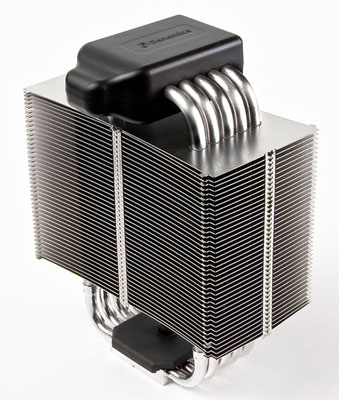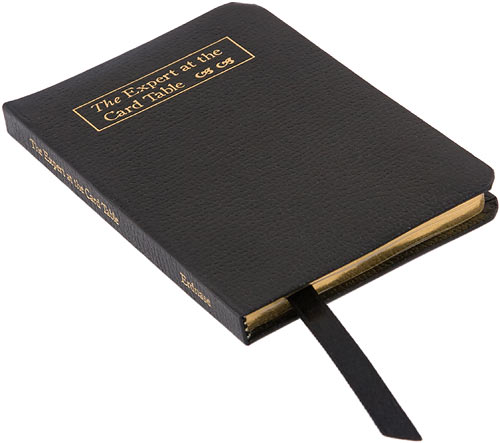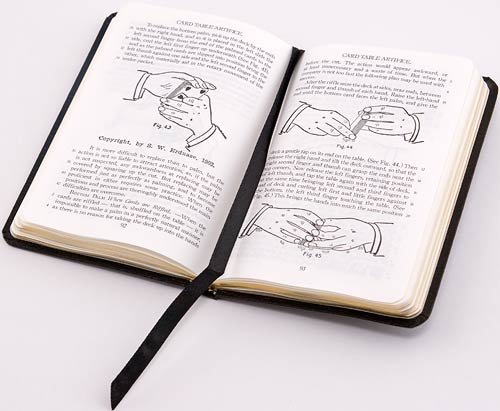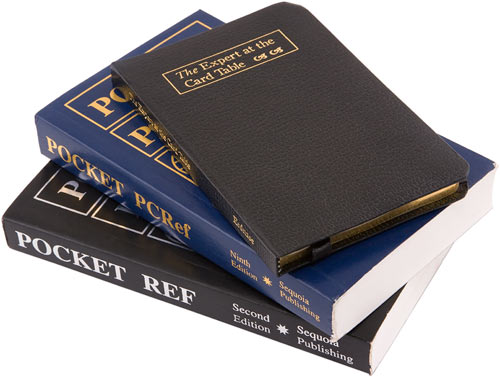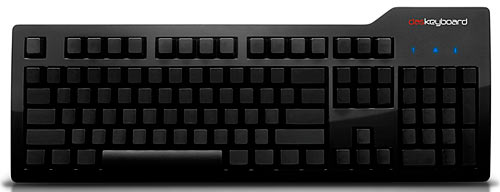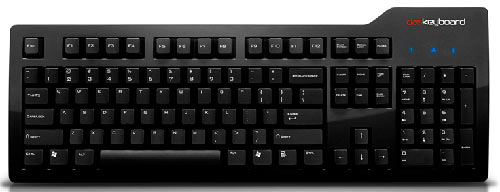I done made me another entry in the TV Tropes wiki. Feel free to add examples and/or improve my deathless prose.
(X+Y)/Z = BS
13 December 2008 — danBen Goldacre's latest Bad Science piece returns to one of his, and my, pet peeves.
It's the "scientists have discovered the formula for" story. You know the sort - they've discovered the formula for the perfect sexy walk, or the ideal biscuit-dunk, or whatever.
These stories are invariably provided by PR companies and self-promoters, and used as gap-filler by understaffed newspapers and TV stations the world over. And they are invariably bullshit of the very highest order. The "formulae" seldom even make internal sense, and when they do make internal sense you can count on them being quite unconnected to anything in the real world.
And, and this is the part that really matters, these stupid stories help to create a public perception of "scientists" as white-coated "boffins" with no real comprehension of the world, who have nothing important to do all day, and nothing comprehensible to say.
You know you're looking at a really broken formula when you see one side of the equation all being multiplied or divided by one variable. The formula for "the perfect joke", for instance, has one side divided by the number of puns. This means all jokes that do not include any puns at all are either infinitely funny, or funny to an undefined extent, depending on which way you look at it.
Many of the "formulae" don't even get that far, though. They're just a misshapen assemblage of algebraic characters, such as you'd expect a seven-year-old to draw if they were pretending to be a mathematician.
This latest example, an alleged formula for determining the "naughtiness rating" of a woman's garment, is entirely representative. It makes no sense in the first place - as long as your nipples are covered, it's apparently impossible to be naughty at all - and the example of it used in the article is broken, with an obvious but un-noticed multiplication by zero making the book-promoting "Cambridge mathematician" responsible look, appropriately, an utter tit.
So far, so usual.
But then Ben points us to Apathy Sketchpad, where one Andrew Taylor has dedicated himself to the detection and analysis of every Stupid Formula Story that's ever made it to the news.
Sometimes, I regret to say, Mr Taylor finds himself driven to profanity.
NOTE: Clearly-enunciated bad language within
9 December 2008 — danPerhaps it was the firewall that irked Stephen Fry so.

(Via. Mr Fry is, of course, not actually very unflappable at all, as listeners to his podcasts already know.)
I'm glad it's not just me and people on b3ta who use the word "cunting".
Sometimes, nothing else will do. There usually seems to be a machine involved.
It'll be heavy water next
7 December 2008 — danHoly crap! You can get a CPU cooler that moves heat by pumping a sodium/potassium mix!
And here it is: The Danamics LM10, recently reviewed by NordicHardware. It certainly makes the old TS Heatronics Zen CPU Radiator look boring.
The sodium/potassium mixture, called "NaK" from the chemical symbols of the elements, can have a melting point as low as -12.6°C. So it's not incredible that you can use it to cool a PC processor. NaK isn't even very difficult to pump, partly because it's less dense than water. It's highly electrically conductive, so the Danamics cooler shifts it with a non-contact electromagnetic pump.
But NaK is usually used as a coolant in nuclear reactors, not PCs. When you only want to move CPU heat to room-temperature air via a pumpable coolant, and how that coolant interacts with fast neutrons is not very important to you, then about all you can say for NaK is that it's better than mercury.
As the NordicHardware reviewer points out, the high specific heat capacity of water makes it the obvious choice for this application, and many others. Water is streets ahead of every other inexpensive liquid for most coolant applications.
And water also has the advantage that it will not explode if it's ever exposed to even dry air. You can't say that about NaK. (Don't even ask about NaK and moisture.)
The gripping hand, though, is that there's very little reason to make a CPU cooler that uses pumped liquid coolant, unless the coolant is being pumped to a large separate radiator. This is how normal PC water cooling systems, and automotive water cooling for that matter, work; using pumped coolant allows you to have a radiator much larger, and more conveniently located, than you could if all of the cooling fins had to be strapped straight onto the CPU, or engine.
(Sodium has a role in automotive cooling too; some engine valves are hollow, and sodium-filled.)
If all you're doing is moving heat to the fins on the top of a CPU cooler, though, you can just use solid metal and/or heat pipes, because the mountain and Muhammad are pretty much in the same place already.
Years ago, I looked at a water cooler that worked in this way. It was pretty useless. The LM10 is much better than that; NordicHardware concluded that it did at least work about as well as a high-end conventional air cooler.
But the LM10 costs 2,199 Danish kroner, which as I write this is $US375. You can get a whole good-quality CPU water-cooling rig for about a hundred bucks less than that, and top-end conventional coolers are of course far less expensive.
But conventional coolers won't make your computer explode if someone hits it with an axe.
So I suppose the choice is yours.
Get kicked out of church, AND the casino
6 December 2008 — danThis slim volume strongly resembles a pocket Bible.
Translucent crinkly gilt-edged paper, ribbon bookmark, cheapest-possible leather-ish binding, text in 6.5-point Myopia. It even numbers every second line of text, to make it easy to quote chapter and verse, as it were.
It's rather slim, though, with only 206 pages.
And it is, if you ask me, likely to be rather more useful than a Bible.
It is The Expert at the Card Table, by the mysterious "S. W. Erdnase". This 2007 edition is published by the Conjuring Arts Research Center, but you can get others, because the author didn't renew his copyright after he wrote the book in 1901.
As is the case for many other mildly odd books that look as if you'd have to dig through dusty used-book shops to find them (that Tintin book with the big-lipped savage natives in it, say), you can buy a brand new copy of The Expert from Amazon for fifteen US dollars.
Amazon also have a nine-dollar paperback version, which might be more practical for actual study, especially if your eyesight isn't the best. And because the book's not copyrighted - though many of the engravings still have "Copyright, by S. W. Erdnase, 1902" under them - you can also legally download various e-book versions of it. Here's one in PDF format, for instance; here's another.
I don't have very high hopes of ever actually mastering many of the techniques in The Expert, but I shall do my best to study it with the devotion it deserves. I think the world would be a better place if more people did.
The other day, for instance, I met a very nice lady who believes one J.Z. Knight is on the level when she claims to be able to channel "Ramtha", a 35,000-year-old spirit from Lemuria who was responsible for most of the quantum flapdoodle in "What the Bleep Do We Know!?". The nice lady explained to me one of the reasons why she chooses to keep up her membership of what some people might describe as the slightly kooky Ramtha's School of Enlightenment. That reason is that some other members of the Ramtha organisation are "able to see through the back of playing cards", even if those cards come from a brand new and untouched deck!
She thought it was very closed-minded of me to observe that this sounds not unlike a card trick.
It actually, now that I think of it, doesn't sound like much of a trick at all - it's more like the exercise you do to learn how to read your marked cards, or interpret what your plant in the audience is signalling to you, or practice your off-by-one reading in which the card that's shown to the audience is actually one you've just been looking at face up, while pretending to concentrate on a different one. Or, you know, whatever. A good card magician could probably do this trick every day for a month without repeating a technique.
Perhaps this amazing gift from Ramtha has more to do with page 182 of The Expert, "The Prearranged Deck". I don't think there's actually anything about marked cards in The Expert, though. Stuff like that is very much below an actual card mechanic. (Not to mention plain useless, because card sharps often prefer to avoid inserting prepared cards into play, since this can lead to the classic aces-falling-out-of-your-sleeves situation.)
When a card mechanic rips you off, you at least know you lost the game, though you may think it happened fairly. Religious hustlers make their audience think they're buying something of value.
The Expert at the Card Table is a fine addition to my Tiny Book Library.
My dusty old 9th Edition Pocket PC Ref is of very limited utility these days, but Pocket Ref will go on forever. I just flicked it open to three random places, and got a trigonometry table, RF Coil Winding Data, and the specific gravity and angle of repose of granulated sugar.
(I'm not sure what that portends. I should probably ask that nice Ramtha lady.)
Zwei Keyboarden
22 November 2008 — danI've accidentally become some sort of Internet authority on clicky IBM-type keyboards. So I've been receiving a pitter-patter of e-mails about the latest products from Das Keyboard.
Das Keyboard originally sprang to nerd-fame with their first, eponymous model, which was notable for what it lacked rather than what it had:
There was nothing printed on the keys.
Personally, I think that's goofy. I don't have to look at the keys when I'm typing, but that doesn't mean I can always remember which key has % and which has ^, especially after the second martini.
I suppose an un-marked keyboard could be of some value as a training aid, and it certainly does have a unique aesthetic appeal. But if you haven't memorised all of the keys, including the used-once-in-a-blue-moon symbols, then to avoid having to just guess when you need to type something unusual on your blank 'board, you'll have to hang a picture of a normal keyboard on the wall.
(I can, by the way, type something in the order of 80 words per minute, which makes a very impressive 900-odd clicks per minute when I'm using a buckling-spring keyboard that makes two clicks per keystroke. I brought my own keyboard to work back when I worked for the Dark Lord Murdoch, and enjoyed an entirely unjustified reputation for doing exactly what I was supposed to do.)
The original Das Keyboard didn't have much to commend it besides its slick appearance, because it was a rebadged Keytronic membrane 'board. It was about as good-feeling as a membrane keyboard can be, but it cost well over twice as much as the printed keyboard it was based on.
Then they made the Das Keyboard II, which was a proper clicky keyboard with discrete keyswitches. Except they didn't really "make" it; I think the II was another rebadge job, this time based on the Ione Scorpius M10. Which, once again, was cheaper than the Das Keyboard version.
Time marches on, and Das Keyboard now have two mechanically-identical keyboards. The first is the "Ultimate"...
...which is another blank 'board, and the second is called the "Professional"...
...which - gasp! - has normal printed keys.
(This reminds me of the Penguin caffeinated-mint company, and their "decaffeinated" mints.)
I'd be happy to review a Das Keyboard Professional, but the last time I dealt with Das Keyboard they were apparently playing she-loves-me, she-loves-me-not, in a variant called we'll-tell-Dan-we're-sending-him-a-keyboard-for-review, no-we-won't, yes-we-will...
This lengthy process ended on "no-we-won't".
I don't think they're actually trying to hide anything - reviews of the new models have been very positive. The only real question is whether, aesthetics aside, you can get something just as good for less money.
It seems that the Ultimate and Professional actually are the first Das Keyboards that you can't buy under another name. If they are still rebadge jobs, I can't find the original models this time. The new 'boards have Cherry keyswitches, so I suspect they're being made by Cherry. But nothing in the Cherry keyboard lineup looks like the new Das Keyboards; there's a "smart card keyboard" that looks a little like them (it has the same projection in the top right corner, which is where the smart-card reader lives), but the key layout is different.
The new Das Keyboards aren't cheap. They list for $US130 in the States, but they're about as big and heavy as an IBM buckling-spring keyboard, so you probably don't want to buy them from overseas. Here in Australia, you can get them from Aus PC Market for $AU198 delivered to anywhere in the country; Australian shoppers who'd like to order the unprinted Ultimate can click here do so, while the printed Professional is here.
The current exchange rate actually makes the keyboards a little cheaper than the US price; as I write this, 198 Australian dollars is only about 122 US dollars, and the Aussie price includes delivery. And any clicky keyboard is likely to last a long time, so a couple of hundred bucks isn't really that much to spend.
(Note that currency exchange rates are unusually variable at the moment, thanks to the financiapocalypse currently sweeping the world. If you're reading this only a month or two after I wrote it, don't be surprised if exchange rates are vastly different.)
There are indeed, however, other clicky-keyboard options.
A few years ago, almost nobody was making clicky keyboards any more, but there's been a resurgence lately. Keyboard connoisseurs are used to fossicking through new-old-stock dealers, used 'boards on eBay from sellers of variable honesty, and of course Unicomp. But there are now a few other companies making keyswitch keyboards.
The most impressive "reborn" keyboards on the market today, if you ask me, are CVT's Avant Prime and Avant Stellar. They sell for $US149 and $US189 respectively, but that's because you can remap almost every single key, and also bind macros to arbitrary keys. Actually doing this is less than totally straightforward, because the CVT 'boards are clones of the old Northgate OmniKeys, and work the same way.
There's also Deck, who made the little keyboard I reviewed a while ago. They have a full-sized IBM-layout 'board called the "Legend", but it's $US149 ex shipping. (The little "Deck 82", like the one I reviewed, is $US99.) All of the Deck 'boards have LED backlighting, though, which really is quite fun.
(On the subject of mini-keyboards: If you're looking for a small decent-feeling non-clicky membrane keyboard, you could also check out the "Happy Hacking Keyboard", which has been available in several different models, even including a blank-keytop version. The only one available now is the $US69 "Lite 2", though.)
There's also Ione (or iOne, or whatever they want to be called), the makers of the Scorpius keyboard that was rebadged as the Das Keyboard II. They're still making the Scorpius M10 It has no fancy features at all, but can be had for fifty US bucks, which is hard to beat.
As I write this, there are three Amazon reviewers complaining about Scorpius keyboards with lousy build quality, but other reviewers specifically mentioned how well the keyboard was made, so I'm not sure what's going on there. Nobody seems to sell the M10 here in Australia, so I don't anticipate getting one to play with any time soon.
SteelSeries have two non-clicky discrete-keyswitch keyboards. That's what you want if you're after good tactile feedback - which lets you type faster and with less effort - but don't want a 'board that makes a racket. Their SteelSeries 6G lists for 99.99 Euros (about $US125, as I write this) plus shipping, and their SteelSeries 7G is 129.99 Euros. The main difference between the two is that the 7G has audio connectors and controls and apparently lets you press every key at once without any being lost, while the 6G has a more normal eight-keys-at-once buffer, and comes with a bunch of grey keytops that you can swap in to make important keys stand out.
There's also the Gigabyte GK-K8000, which is a bit unsightly but has Cherry keyswitches, a bunch of extra programmable keys, and onboard USB audio. It apparently lists for $US113, but doesn't actually seem to have quite made it to the shelves yet.
Mac users might like to check out the Matias Tactile Pro, which resurrects the old Apple Alps-keyswitch keyboards. The Tactile Pro version 2 sells for $US149.95, plus at least $US20 shipping.
If I were shopping for a clicky keyboard right now, my first stop would be eBay, to see if someone within inexpensive-shipping-distance of me had a decent-looking buckling-spring IBM 'board, or maybe something with the classic Alps keyswitches. If you're in the USA, you're very likely to be able to find a buckling-spring or discrete-keyswitch keyboard with many years of service left in it for less than fifty bucks including delivery. Clickykeyboards.com and Unicomp are excellent options for US shoppers, too.
If you're somewhere like Australia, though, you'll probably be waiting a while for your saved eBay search to turn up any options, and shipping prices for battleship keyboards from overseas will be painful.
Now that keyswitch keyboards are normal retail items again, you might as well just get yourself something like the Das Keyboard Professional. It won't cost you any more, you'll get a local warranty, and you'll probably be delighted.
Nightmare spider, now only $950!
19 November 2008 — danThe Phoenix spider-bot I mentioned earlier this year is now available as a (rather expensive) kit!
The kit costs $US949.99 ex shipping, which would be outrageous if all you got were the mechanical parts and R/C gear. But you also get a pre-programmed microcontroller that ties the bot's actions together, allowing you to control it with a wireless PlayStation controller, which is also included.
So it's not a Crabfu-type "robo-puppet", where leg movement is tied directly to stick movement. It's more like a normal radio-controlled walker, but with far more freedom of motion, including a variety of gaits.
And it can still play with boxes.
Bleep boop neep beep bloop beep boop...
12 November 2008 — danThese guys remind me of someone.
And also remind me that I must get around to building that Thingamakit I bought the other day.
(Via.)
